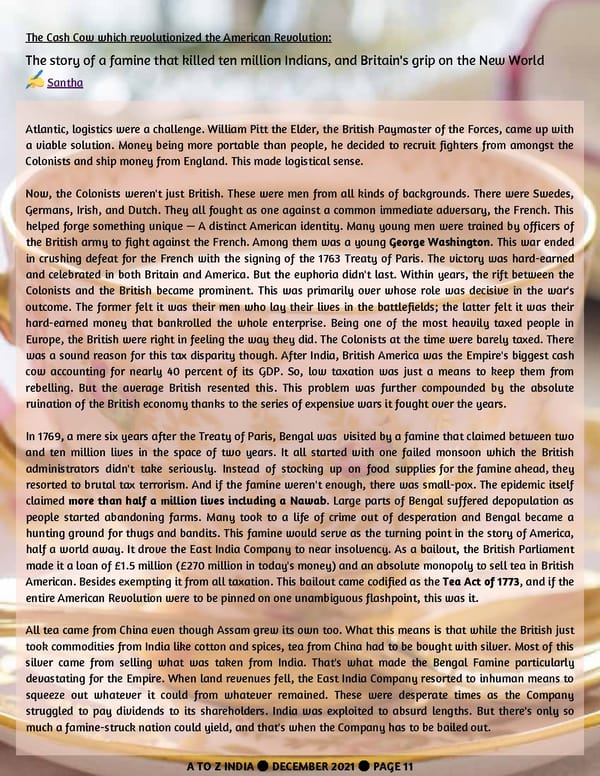Atlantic, logistics were a challenge. William Pitt the Elder, the British Paymaster of the Forces, came up with a viable solution. Money being more portable than people, he decided to recruit fighters from amongst the Colonists and ship money from England. This made logistical sense. Now, the Colonists weren't just British. These were men from all kinds of backgrounds. There were Swedes, Germans, Irish, and Dutch. They all fought as one against a common immediate adversary, the French. This helped forge something unique — A distinct American identity. Many young men were trained by officers of the British army to fight against the French. Among them was a young George Washington . This war ended in crushing defeat for the French with the signing of the 1763 Treaty of Paris. The victory was hard-earned and celebrated in both Britain and America. But the euphoria didn't last. Within years, the rift between the Colonists and the British became prominent. This was primarily over whose role was decisive in the war's outcome. The former felt it was their men who lay their lives in the battlefields; the latter felt it was their hard-earned money that bankrolled the whole enterprise. Being one of the most hea vily taxed people in Europe, the British were right in feeling the way they did. The Colonists at the time were barely taxed. There was a sound reason for this tax disparity though. After India, British America was the Empire's biggest cash cow accounting for nearly 40 percent of its GDP. So, low taxation was just a means to keep them from rebelling. But the average British resented this. This problem w as further compounded by the absolute ruination of the British economy thanks to the series of expensive wars it fought over the years. In 1769, a mere six years after the Treaty of Paris, Bengal was visited by a famine that claimed between two and ten million lives in the space of two years. It all started with one failed monsoon which the British administrators didn't take seriously. Instead o f stocking up on food supplies for the famine ahead, they resorted to brutal tax terrorism. And if the famine weren't enough, there was small-pox. The epidemic itself claimed more than half a million lives including a Nawab . Large parts of Bengal suffered depopulation as people started abandoning farms. Many took to a life of crime out of desperation and Bengal became a hunting ground for thugs an d bandits. This famine would serve as the turning point in the story of America, half a world away. It drove the East India Company to near insolvency. As a bailout, the British Parliament made it a loan of £1.5 million (£270 million in today's money) and an absolute monopoly to sell tea in British American. Besides exempting it from all taxation. This bailout came codified as the Tea Act of 1773 , and if the entire American Revolution were to be pinned on one unambiguous flashpoint, this was it. All tea came from China even though Assam grew its own too. What this means is that while the British just took commodities from India like cotton and spices, tea from China had to be bought with silver. Most of this silver came from selling what was taken from India. That's what made the Bengal Famine pa rticularly devastating for the Empire. When land revenues fell, the East India Company resorted to inhuman means to squeeze out whatever it could from whatever remained. These were desperate times as the Company struggled to pay dividends to its shareholders. India was exploited to absurd lengths. But there's only so much a famine-struck nation could yield, and that's when the Company has to be bailed out. The story of a famine that killed ten million Indians, and Britain's grip on the New World Santha The Cash Cow which revolutionized the American Revolution: A TO Z INDIA ● DECEMBER 2021 ● PAGE 11
 A TO Z INDIA - DECEMBER 2022 Page 10 Page 12
A TO Z INDIA - DECEMBER 2022 Page 10 Page 12